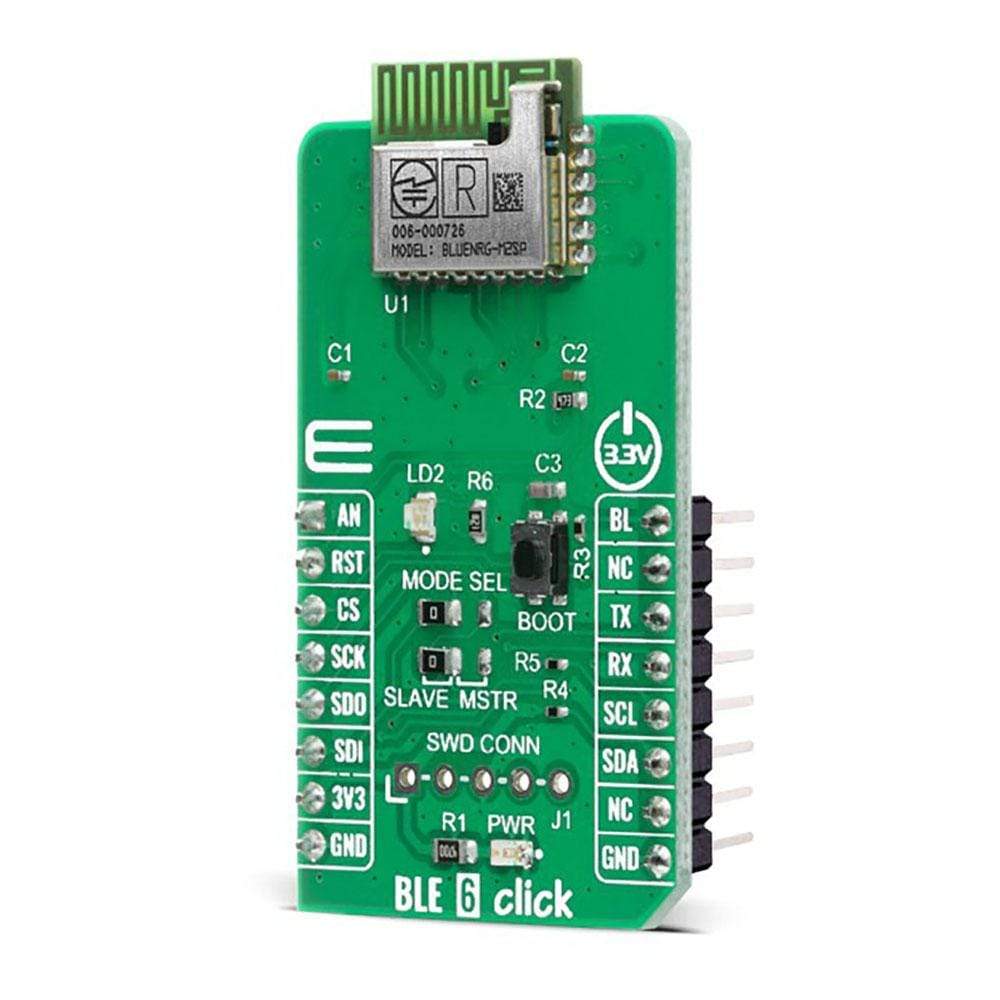
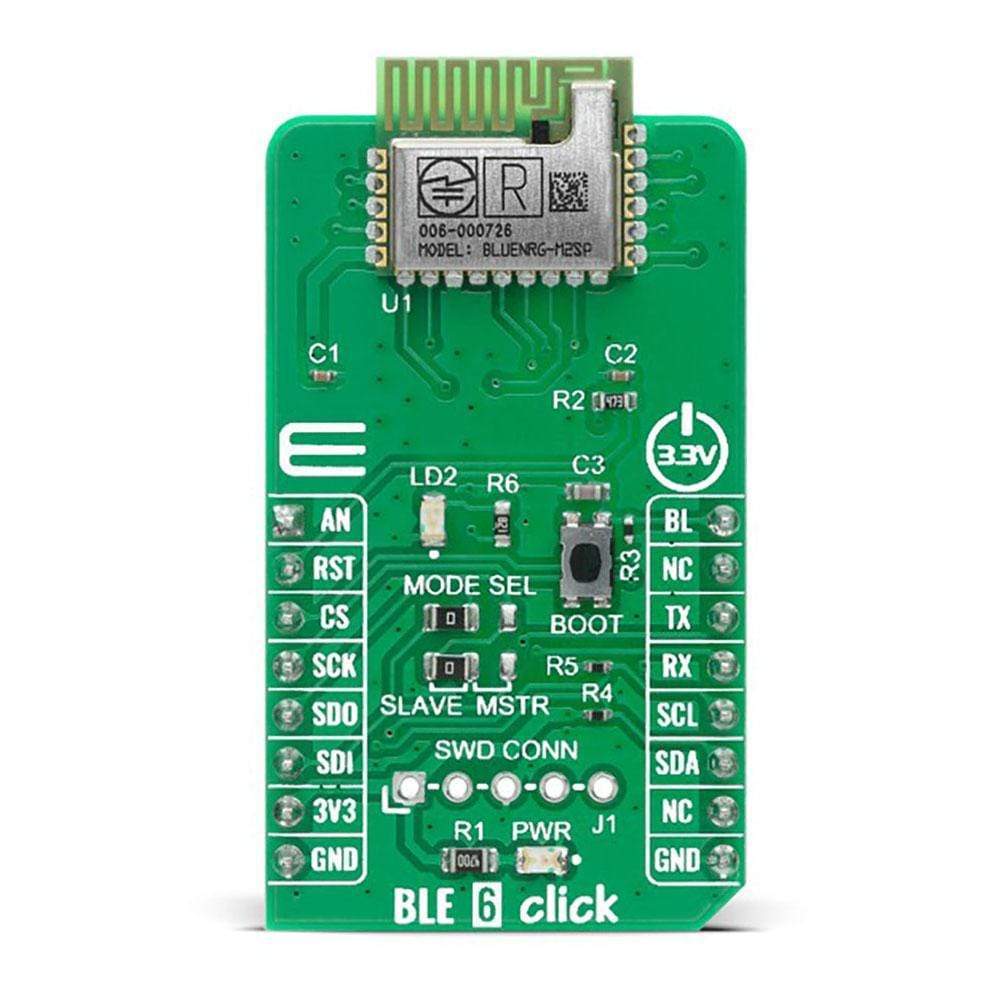
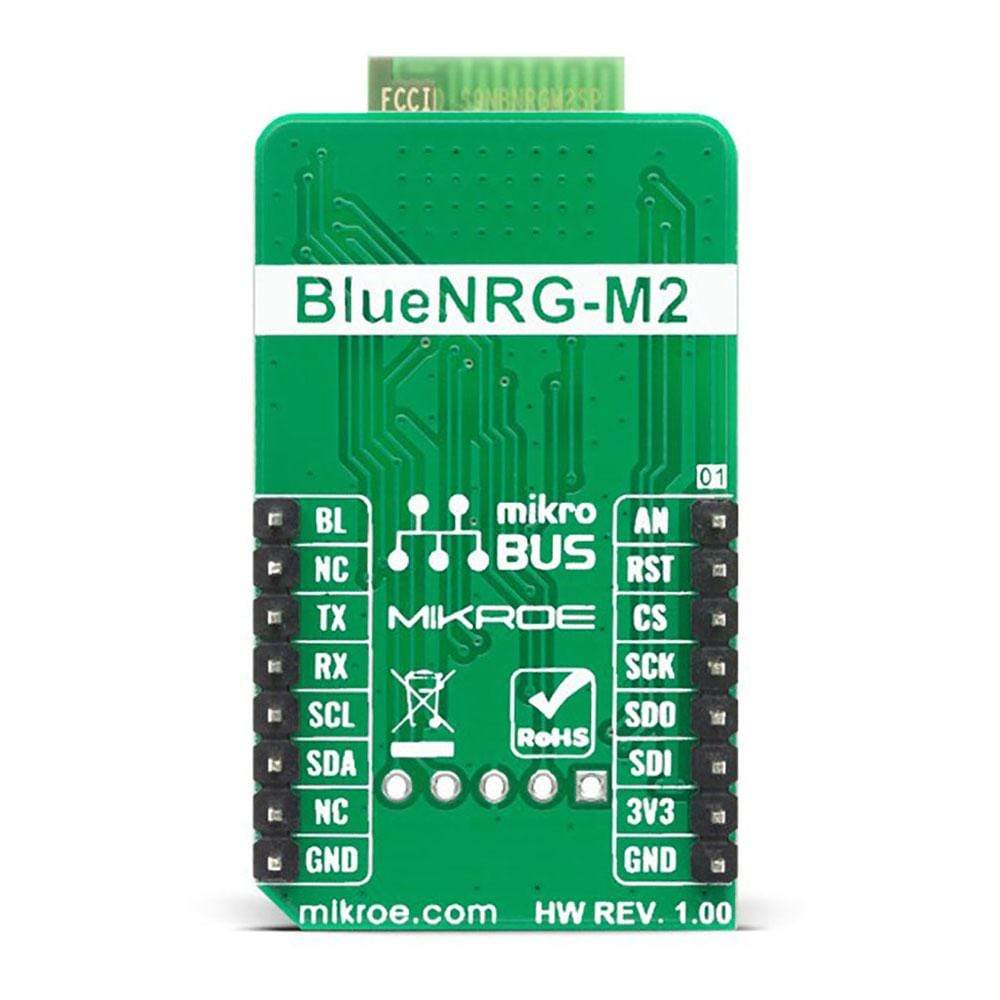
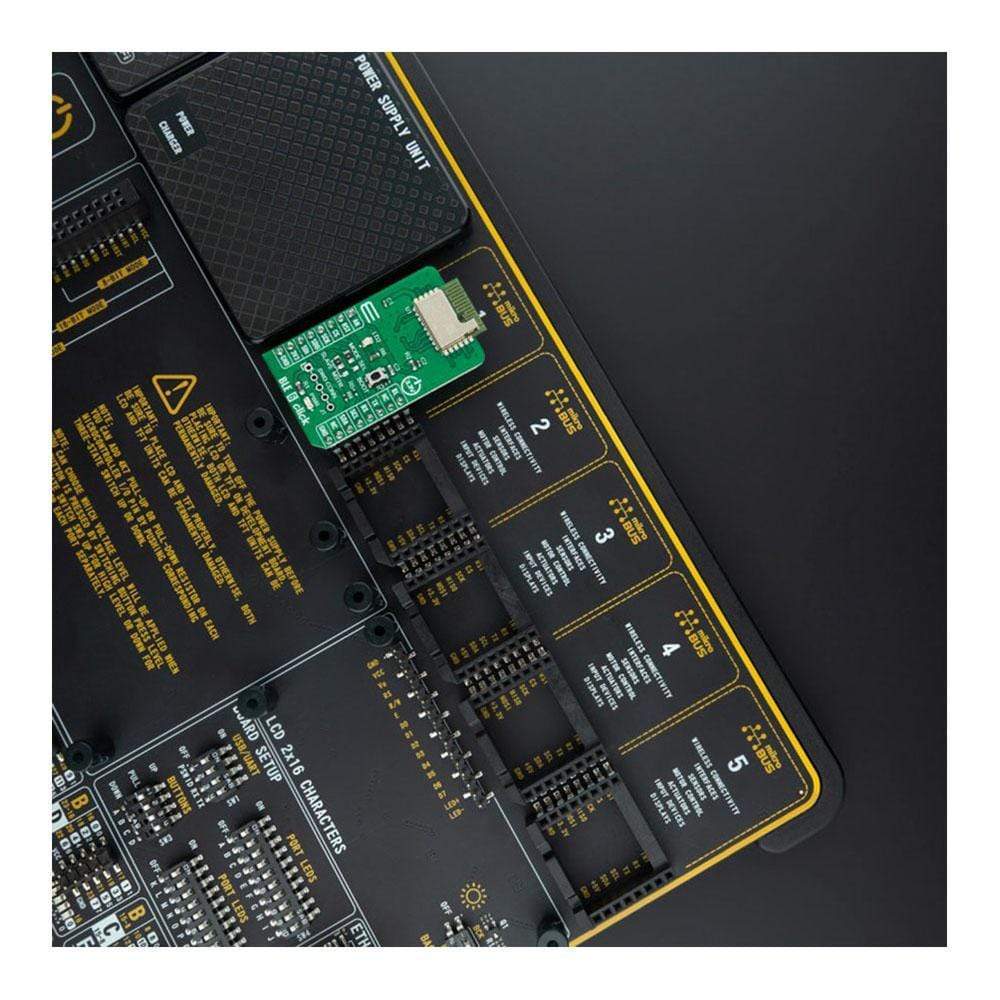
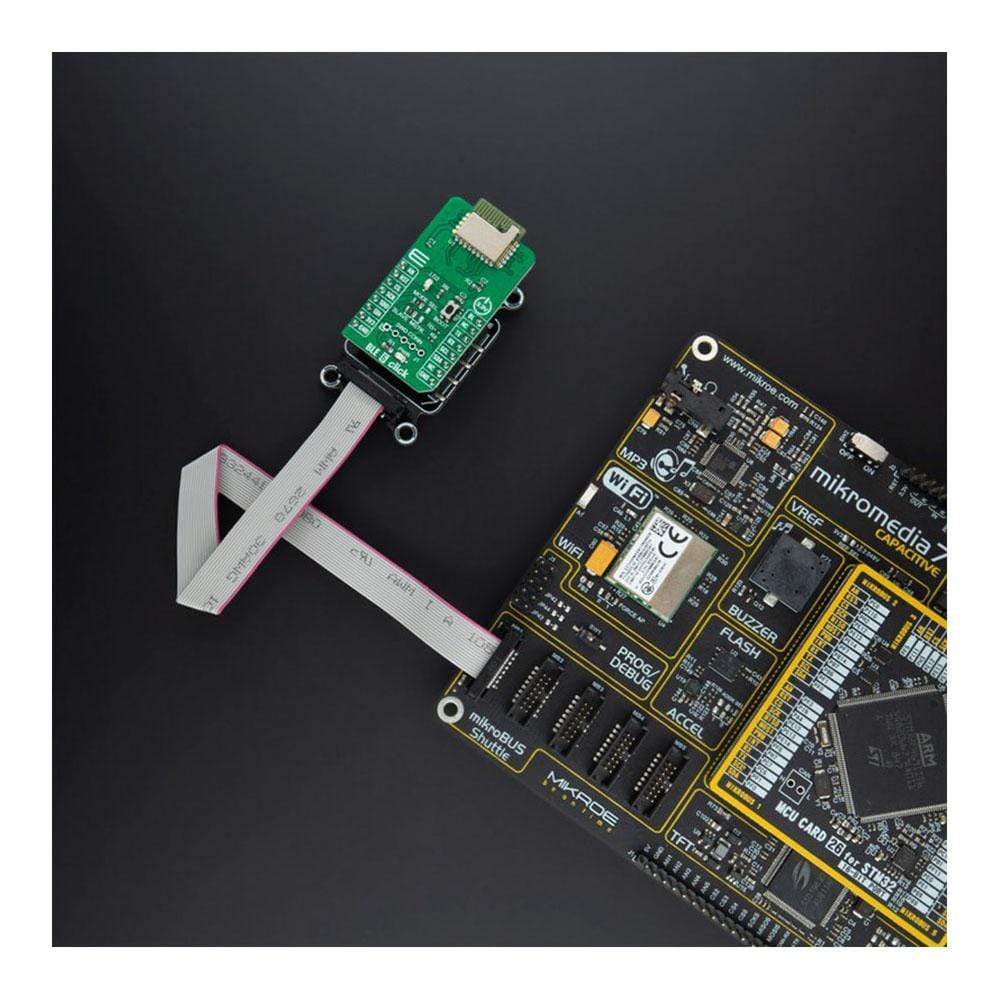
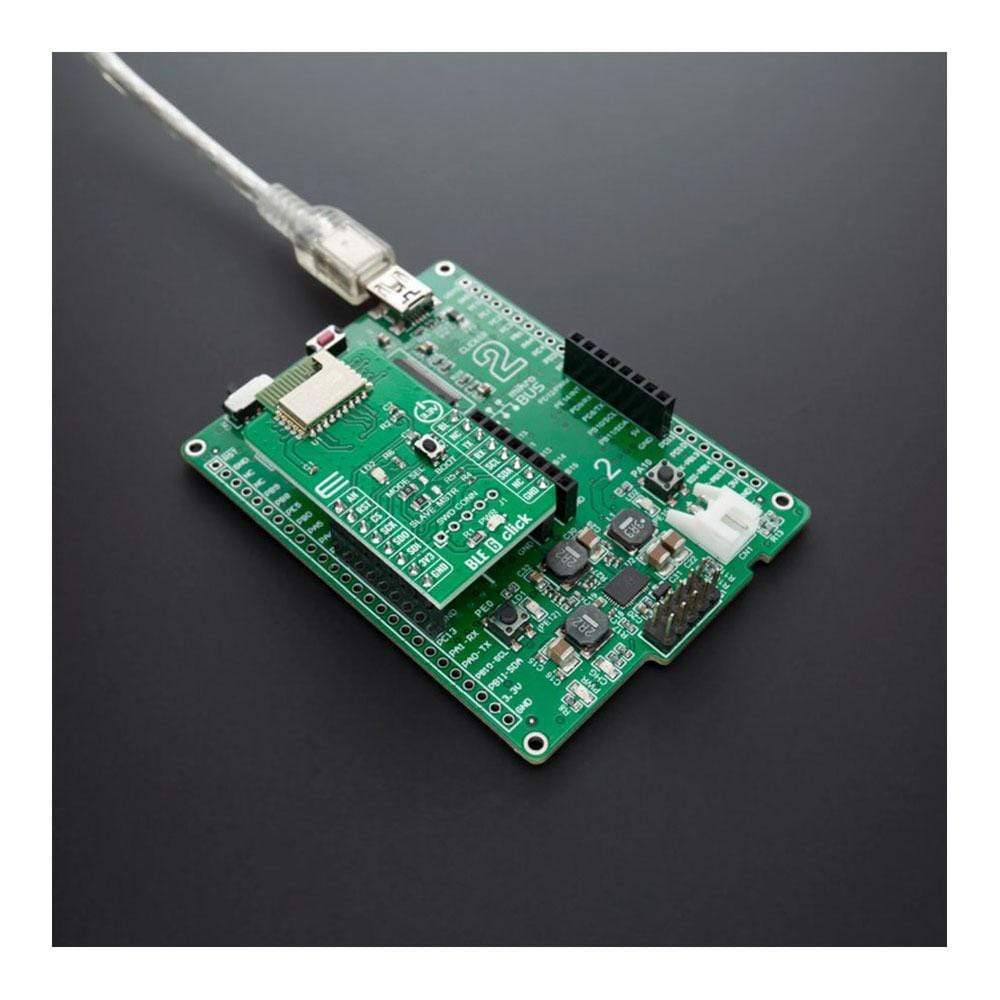
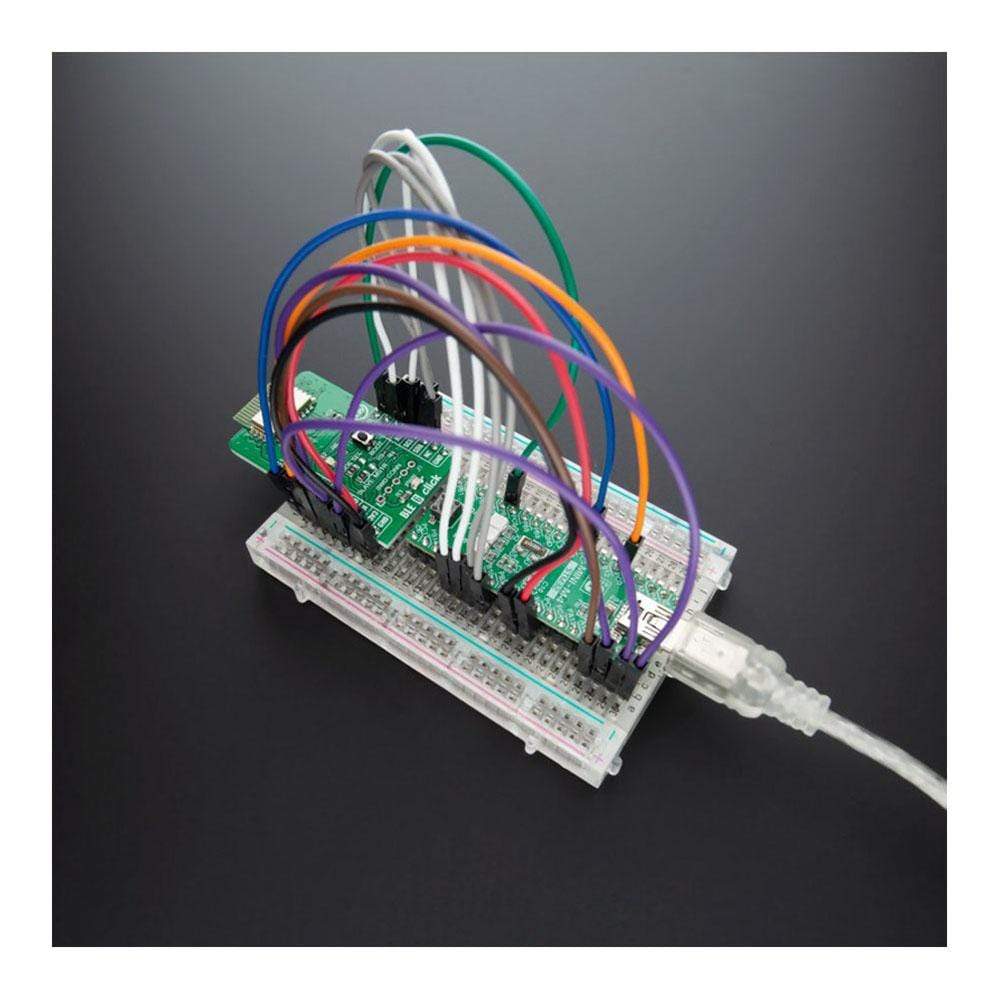
Overview
The BLE 6 Click Board™ is a Bluetooth low energy system-on-chip application processor certified module, compliant with BT specifications v5.0 and BQE qualified. The featured BlueNRG-M2 module developed by STMicroelectronics supports multiple roles simultaneously and can act at the same time as Bluetooth master and slave devices. The BlueNRG-M2 is based on the BlueNRG-2 system-on-chip and the entire Bluetooth low energy stack and protocols are embedded into the module.
The BlueNRG-M2 module provides a complete RF platform in a tiny form factor. Radio, embedded antenna and high-frequency oscillators are integrated to offer a certified solution to optimize the time-to-market of the final applications.
The BLE 6 Click Board™ is a perfect solution for various IoT applications, smart home applications, BLE enabled toys, advanced robotics, and other similar applications
Downloads
Le BLE 6 Click Board™ est un module de processeur d'application Bluetooth Low Energy System-on-Chip certifié, conforme aux spécifications BT v5.0 et qualifié BQE. Le module BlueNRG-M2 développé par STMicroelectronics prend en charge plusieurs rôles simultanément et peut agir en même temps comme périphériques maître et esclave Bluetooth. Le BlueNRG-M2 est basé sur le système sur puce BlueNRG-2 et l'intégralité de la pile et des protocoles Bluetooth Low Energy sont intégrés au module.
Le module BlueNRG-M2 fournit une plate-forme RF complète dans un format minuscule. La radio, l'antenne intégrée et les oscillateurs haute fréquence sont intégrés pour offrir une solution certifiée permettant d'optimiser le délai de mise sur le marché des applications finales.
Le Tableau à clic BLE 6™ est une solution parfaite pour diverses applications IoT, applications de maison intelligente, jouets compatibles BLE, robotique avancée et autres applications similaires
| General Information | |
|---|---|
Part Number (SKU) |
MIKROE-4170
|
Manufacturer |
|
| Physical and Mechanical | |
Weight |
0.018 kg
|
| Other | |
Country of Origin |
|
HS Code Customs Tariff code
|
|
EAN |
8606018717903
|
Warranty |
|
Frequently Asked Questions
Have a Question?
Be the first to ask a question about this.







